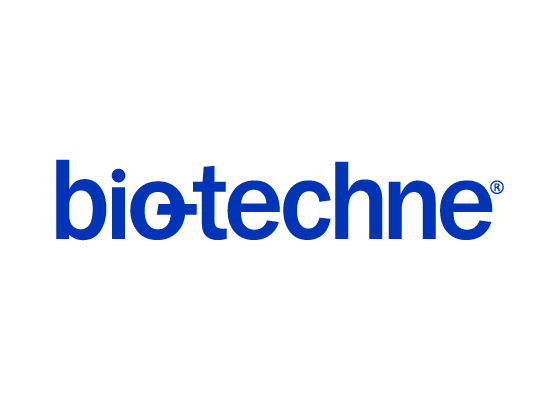Human FGF-21 Alexa Fluor® 405-conjugated Antibody
R&D Systems, part of Bio-Techne | Catalog # IC25372V


Key Product Details
Species Reactivity
Validated:
Applications
Label
Antibody Source
Product Summary for Human FGF-21 Alexa Fluor® 405-conjugated Antibody
Immunogen
His29-Ser209
Accession # Q9NSA1
Specificity
Clonality
Host
Isotype
Applications for Human FGF-21 Alexa Fluor® 405-conjugated Antibody
Intracellular Staining by Flow Cytometry
Sample: HepG2 human hepatocellular carcinoma cell line fixed with paraformaldehyde and permeabilized with saponin
Formulation, Preparation, and Storage
Formulation
Shipping
Stability & Storage
Background: FGF-21
Fibroblast growth factor 21 (FGF-21) is a member of the FGF gene family, which currently contains 22 human members. Based on its structure, it is further classified as an FGF-19 subfamily member. This subfamily includes FGF-19, -21, and -23. Like all other FGF subfamilies, FGF-19 subfamily members contain a 120 amino acid (aa) core FGF domain that exhibits a beta-trefoil structure (1, 2). Unlike other FGF subfamilies, FGF-19 subfamily members apparently exhibit poor binding to ECM, resulting in highly diffusible molecules (3). The cDNA for FGF-21 predicts a 209 aa polypeptide that contains a 28 aa signal sequence and a 181 aa mature region (4). Notably, FGF-21, as well as FGF-19 show limited binding to heparin (4). One potential alternate splice form has been reported. It shows a 43 aa substitution for the C‑terminal 12 aa of the standard form (5). Mature human FGF-21 shows 81% aa identity to mouse FGF-21, and is known to be active on mouse cells (4, 6). The FGF‑19 subfamily is considered endocrine in nature. All three subfamily members impact some aspect of metabolism, all three are induced by a nuclear receptor heterodimer that includes RXR, and all three utilize Klotho family members for signal transduction (7, 8, 9). FGF-21 is produced by hepatocytes in response to free fatty acid (FFA) stimulation of a PPARa/RXR dimeric complex (3, 7, 10, 11). This situation occurs clinically during starvation, or following the ingestion of a high-fat/low-carbohydrate diet. Upon FGF-21 secretion, white adipose tissue is induced to release FFAs from triglyceride stores. Once FFAs reach hepatocytes, they are oxidized and reduced to acetyl-CoA. The acetyl-CoA is recombined into 4-carbon ketone bodies (acetoacetate and beta-hydroxybutyrate), released, and transported to peripheral tissues for TCA processing and energy generation (11, 12).
References
- Itoh, N. and D.M. Ornitz (2004) Trends Genet. 20:563.
- Mohammadi, M. et al. (2005) Cytokine Growth Factor Rev. 16:107.
- Huang, X. et al. (2006) Mol. Carcinog. 45:934.
- Nishimura, T. et al. (2000) Biochim. Biophys. Acta 1492:203.
- GenBank Accession #: EAW52401 (2006).
- Ford, A.M. et al. (2005) J. Clin. Invest. 115:1627.
- Moore, D. D. (2007) Science 316:1436.
- Ogawa, Y. et al. (2007) Proc. Natl. Acad. Sci. USA 104:7432.
- Kurosu, H. et. al. (2007) J. Biol. Chem. 282:26687.
- Lundasen, T. et al. (2007) Biochem. Biophys. Res. Commun. 360:437.
- Badman, M.K. et al. (2007) Cell Metab. 5:426.
- Inagaki, T. et al. (2007) Cell Metab. 5:415.
Long Name
Alternate Names
Gene Symbol
UniProt
Additional FGF-21 Products
Product Documents for Human FGF-21 Alexa Fluor® 405-conjugated Antibody
Product Specific Notices for Human FGF-21 Alexa Fluor® 405-conjugated Antibody
This product is provided under an agreement between Life Technologies Corporation and R&D Systems, Inc, and the manufacture, use, sale or import of this product is subject to one or more US patents and corresponding non-US equivalents, owned by Life Technologies Corporation and its affiliates. The purchase of this product conveys to the buyer the non-transferable right to use the purchased amount of the product and components of the product only in research conducted by the buyer (whether the buyer is an academic or for-profit entity). The sale of this product is expressly conditioned on the buyer not using the product or its components (1) in manufacturing; (2) to provide a service, information, or data to an unaffiliated third party for payment; (3) for therapeutic, diagnostic or prophylactic purposes; (4) to resell, sell, or otherwise transfer this product or its components to any third party, or for any other commercial purpose. Life Technologies Corporation will not assert a claim against the buyer of the infringement of the above patents based on the manufacture, use or sale of a commercial product developed in research by the buyer in which this product or its components was employed, provided that neither this product nor any of its components was used in the manufacture of such product. For information on purchasing a license to this product for purposes other than research, contact Life Technologies Corporation, Cell Analysis Business Unit, Business Development, 29851 Willow Creek Road, Eugene, OR 97402, Tel: (541) 465-8300. Fax: (541) 335-0354.
For research use only